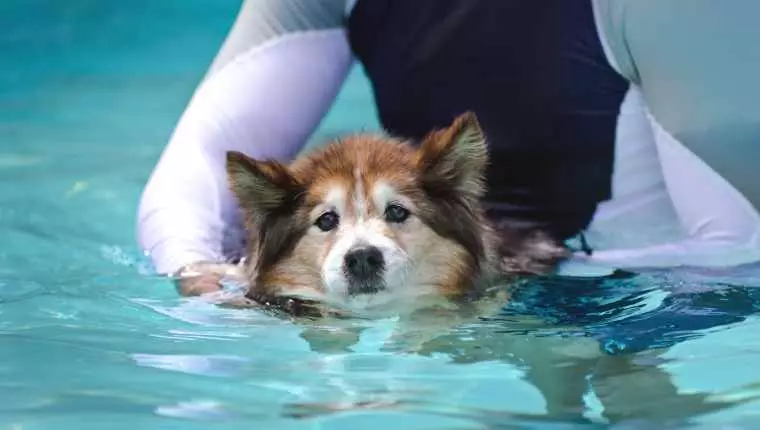In the evolving landscape of veterinary care, hydrotherapy—or water therapy—is carving out an impactful niche for itself as a leading form of rehabilitation for dogs. Rooted in ancient practices, the term “hydrotherapy” originates from the Greek words for ‘water’ and ‘healing,’ symbolizing a potent blend of tradition and innovation. Many pet owners are now asking: can water truly heal our beloved companions? The answer may well lie in the manifold benefits offered by this unique approach.
This specialized therapy stands out particularly for dogs suffering from serious ailments, such as torn ligaments or arthritis, offering both pain relief and rehabilitative support. It works through the mechanics of water resistance and buoyancy, allowing dogs to exercise without the burden of gravity, which can exacerbate their existing issues. This low-impact nature of hydrotherapy has led to its embrace among physio-vets and dog owners alike—demonstrating the transformational potential of aquatic recovery.
How Hydrotherapy Works: The Mechanics of Healing
At the heart of hydrotherapy’s effectiveness are principles of physics utilized in a therapeutic environment. When immersed in water, dogs experience reduced stress on their joints, making movement easier and more effective. This property not only facilitates rehabilitation but also stimulates natural anti-inflammatory responses, aiding in pain reduction, swelling, and stiffness.
There are various modalities within hydrotherapy that cater to specific needs. For instance, the underwater treadmill serves as a popular choice, delighting pets who may shy away from full immersion in a pool. Encapsulated in glass or plastic, this device enables slow and controlled movement in water—a method that ensures that even the most compromised joints receive attention without undue strain.
In contrast, hydrotherapy pools enriched with warm jet streams provide targeted muscle massage and relief. Dogs can revel in the soothing sensations of water, while therapeutic jets work to penetrate deeper muscle layers, offering relief from pain associated with musculoskeletal problems.
Types of Hydrotherapy: Tailored Treatments for Your Pup
Determining the best hydrotherapy type for your furry friend is crucial, based on injury specifics and overall health. Whether it’s post-surgical recovery, orthopedic issues, or age-related conditions, hydrotherapy offers several options.
The most common form of hydrotherapy employs a treadmill, which not only allows dogs to walk but also to regain muscle strength and joint functionality. It is particularly beneficial for dogs recovering from major surgeries, leading to enhanced mobility and improved overall strength.
Additionally, for those pups that love—or at least tolerate—water, pool therapy can provide immense benefits. These sessions often involve a harness to keep your dog buoyant, while trained professionals guide them through exercises designed to restore range of motion and ameliorate pain in targeted areas, such as shoulders and hips. Here, the focus lies not only on recovery but also on building cardiovascular health and overall fitness.
Broad Spectrum Benefits of Hydrotherapy
Beyond the primary goals of pain relief and rehabilitation, hydrotherapy brings with it a plethora of ancillary benefits. Regular sessions can lead to:
– Enhanced muscle strength, ensuring joints receive the support they need.
– A marked increase in range of motion, essential for maintaining an active lifestyle.
– Improved circulation promoting healthier tissues, which is crucial for efficient healing.
– Liberation from muscle spasms, allowing greater freedom of movement and activity levels.
These collective benefits turn hydrotherapy into an essential component of a holistic care approach for dogs, permitting a brighter, more active life post-injury.
Professional Oversight: The Key to Effective Hydrotherapy
Despite the numerous advantages, pet owners must remember that hydrotherapy isn’t a one-size-fits-all solution. It requires skilled veterinary practitioners and certified hydrotherapists who can customize treatment plans based on individual needs. Special equipment, proper supervision, and tailored exercises all contribute to maximizing recovery outcomes.
Furthermore, the cost of hydrotherapy can vary widely based on factors such as geographical location, the particular injury being treated, and the therapy’s duration. Expect to invest between $40 and $60 for a typical session lasting around thirty minutes, a small price for the significant healing benefits your furry friend may gain.
Amid the growing body of evidence supporting hydrotherapy, one can’t help but champion this innovative treatment as a stellar example of how modern veterinary care is evolving. With it, we open the door to a brighter, healthier future for our dogs—a future where pain management and mobility no longer feel out of reach but instead are embraced and celebrated.

